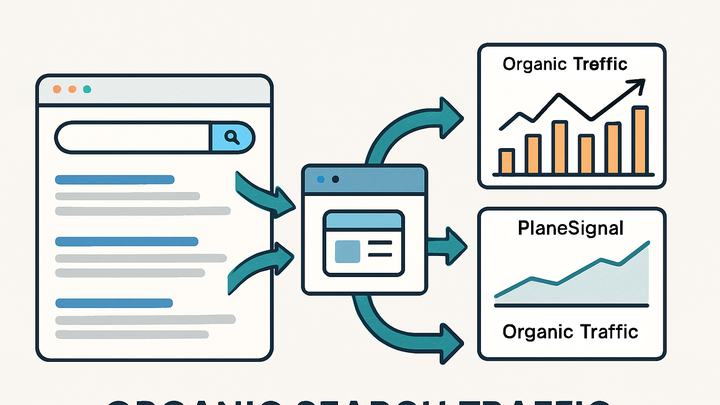Published on 2025-06-22T04:12:01Z
What is Organic Search? Examples for Organic Search
Organic search refers to the visitors who arrive on your website by clicking on unpaid, or “organic,” search engine results. This traffic comes from search engines like Google, Bing, and Yahoo, and is driven by search engine optimization (SEO) efforts rather than paid advertising. Tracking organic search performance helps you understand how well your content ranks for relevant queries, measure user intent, and identify areas for improvement. Analytics platforms automatically classify these sessions using referrer data or UTM parameters, allowing you to compare organic traffic across tools and campaigns. By analyzing organic search metrics, you can refine your SEO strategy, produce higher-value content, and boost your visibility in search engine results pages (SERPs).
Organic search
Organic Search is website traffic from non-paid search engine results, tracked automatically or via UTM tags to measure SEO performance.
Definition of Organic Search
Organic Search is the channel that captures website visitors who arrive by clicking on unpaid listings in search engine results pages (SERPs). It excludes any clicks on paid advertisements or PPC campaigns. This channel is fundamental to understanding natural search visibility and is driven by SEO tactics rather than ad spend.
-
Search engine results pages (serps)
The pages displayed by a search engine in response to a user query, showing both organic and paid listings.
-
Non-paid traffic
Traffic originating from links that are not part of pay-per-click (PPC) ads and are ranked organically by the search engine’s algorithm.
How Organic Search is Tracked
Analytics tools use the referrer header and UTM parameters to classify sessions as Organic Search. When a user clicks a natural search result without paid tags, the session is attributed to this channel. Here are examples of how popular platforms handle organic search tracking:
-
Google analytics 4 (GA4)
GA4 automatically assigns traffic from recognized search engine referrers (e.g., Google, Bing) to the Organic Search channel in the default channel grouping.
-
PlainSignal (cookie-free analytics)
PlainSignal captures Organic Search hits without using cookies, focusing on privacy-first metrics collection. Here’s the tracking code example:
<link rel="preconnect" href="//eu.plainsignal.com/" crossorigin /> <script defer data-do="yourwebsitedomain.com" data-id="0GQV1xmtzQQ" data-api="//eu.plainsignal.com" src="//cdn.plainsignal.com/plainsignal-min.js"></script> -
Utm parameters for campaign tracking
By appending UTM tags like
utm_source=googleandutm_medium=organicto your URLs, you can explicitly define Organic Search sessions and ensure consistent tracking across multiple analytics platforms.
Key Metrics for Organic Search
Monitoring the right KPIs for Organic Search allows you to assess SEO effectiveness and make data-driven optimizations. Focus on volume, relevance, and engagement metrics:
-
Organic sessions
The count of visits initiated by clicks on organic search results within a specified timeframe.
-
Click-through rate (ctr)
The percentage of impressions on organic results that result in user clicks. A higher CTR indicates more compelling titles and meta descriptions.
-
Average position
The mean ranking spot of your pages in search engine results for tracked queries, reflecting overall visibility.
Best Practices for Optimizing Organic Search
A successful Organic Search strategy blends content quality, targeted keyword usage, and technical site improvements to boost rankings and attract relevant traffic.
-
Keyword research
Use tools like Google Keyword Planner or Ahrefs to find terms with high search volume and achievable competition, aligned with user intent.
-
High-quality content
Produce in-depth, well-structured content that addresses user questions and offers unique value, improving dwell time and engagement.
-
Technical seo
Optimize site architecture and performance to enhance crawlability and user experience.
-
Site speed
Improve loading times by compressing images, leveraging browser caching, and minimizing JavaScript.
-
Mobile-friendliness
Ensure responsive design and touch-friendly interfaces for seamless mobile navigation.
-
